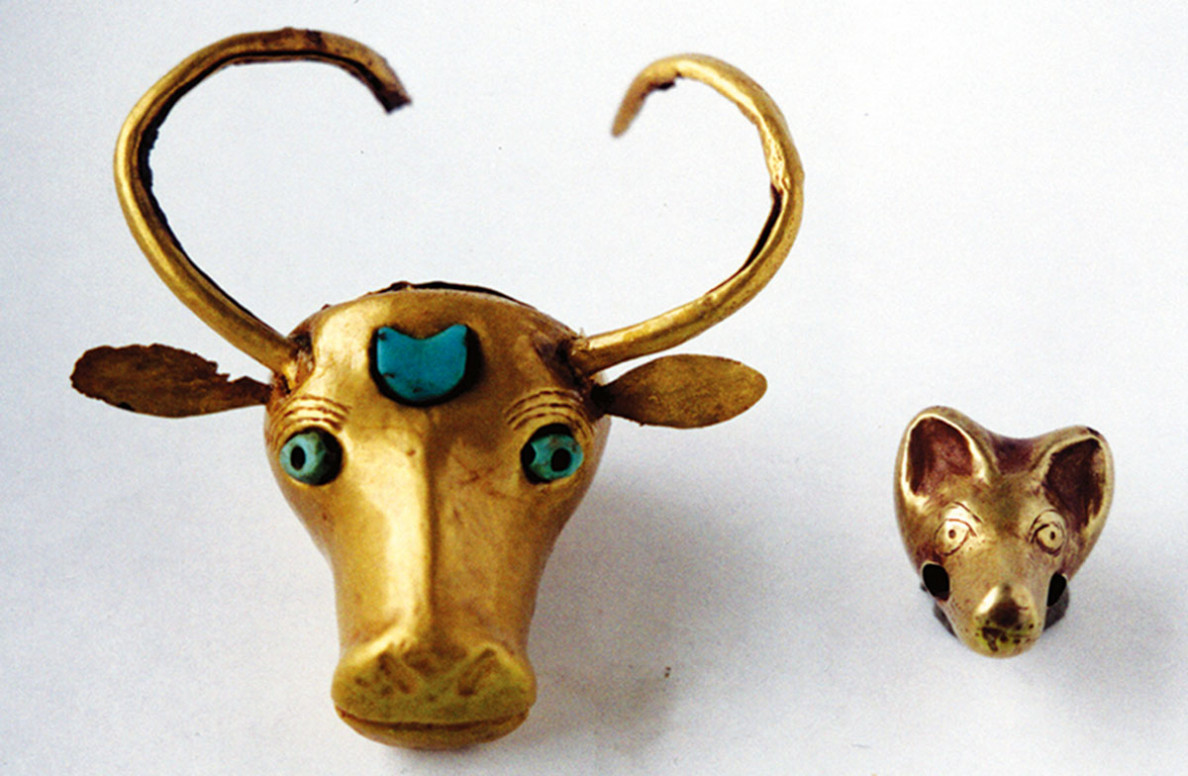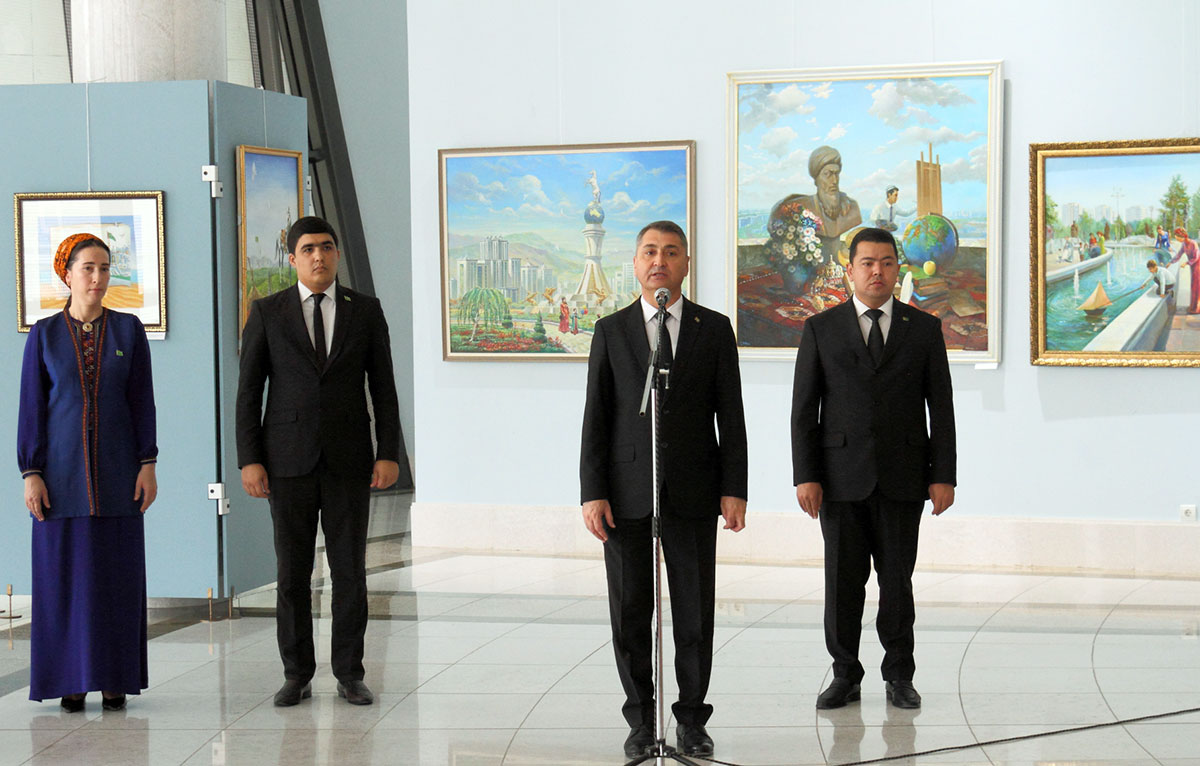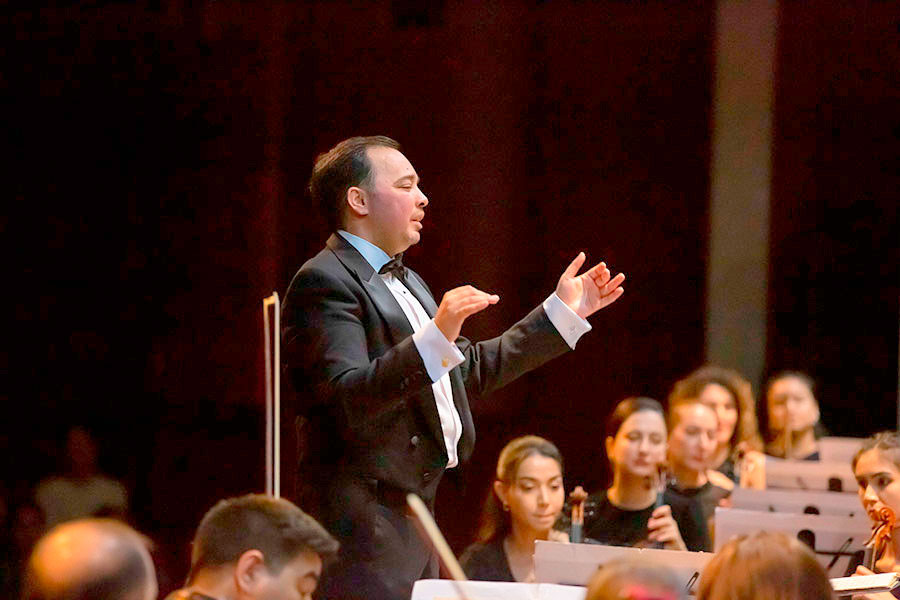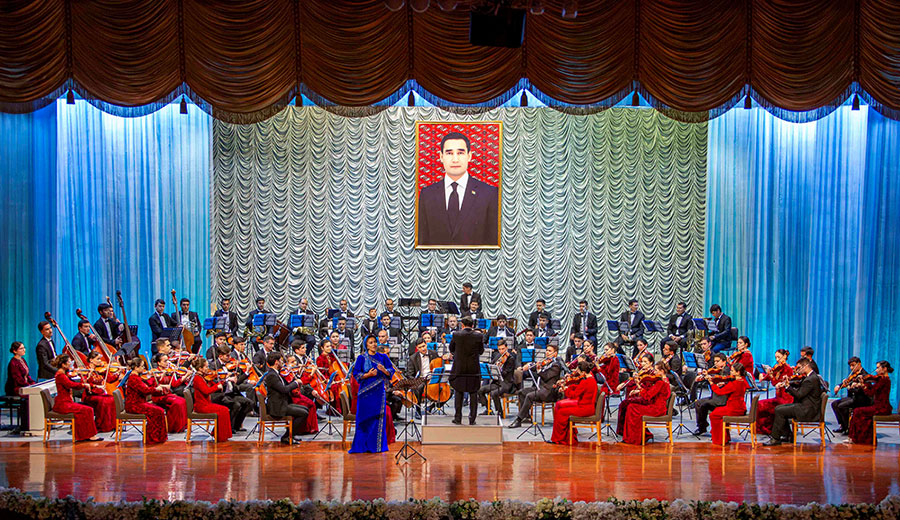Many talented archaeologists, who made a contribution to the study of history by physical evidence, have worked in Turkmenistan, which is rich with great number of historical monuments. Two contemporaries, co-authors of several scientific works and big friends Victor Sarianidi and Vadim Masson are among the most famous scientists who dedicated their lives to study of the secrets of Turkmen land.
Candidate of Historical Sciences, Head of National Department of Turkmenistan for protection, study and restoration of historical and cultural monuments Muhammed Mammedov has shared his memory about Victor Sarianidi while Head of the Department of Study and Registratio of the monuments of the same organization, Candidate of Historical Sciences Ejegul Muradov has told about Vadim Masson.
Ejegul Muradov, who Vadim Masson used to call as his right-hand woman in Turkmenistan, is among more than two dozens of students of patriarch of Eurasian archeology, which have become candidates and doctors of historical sciences.
The world-famous scientists, discoverer and researcher of ancient cultures of the south of Central Asia, a person of exclusive talent, energy and insight, was born on May 3, 1929 in the family of prominent scientist, patriarch of Central Asian archaeology Mikhail Masson – famous explorer, polyglot, numismatist, founder and leader of South Turkmenistan Complex Archeological Expedition (STCAE).
Since 1946 being a student of Central Asian Archaeology Department of Historical faculty of Central Asian State University, lately Tashkent State University and currently Mirzo Ulugbek National University of Uzbekistan, he has started participating in field studies.
The following story tells about Vadim Masson’s dedication to what he was doing. In 1996, writer Nikolay Golovkin, son of Alexey Golovikin, a veteran of archive business in Turkmenistan, head of the General Archive Department of Turkmenistan until 1988, Honorary Citizen of Ashgabat, interviewed personnel of the Institute of History of the Academy of Sciences of Turkmenistan. During the conversation, Nikolay Golovkin, who worked in Turkmen Press News Agency in that period, was told that Vadim Masson has come to Nisa, where his father was working two years earlier, for excavation on October 1948. Collection of Parthian rhytons made of ivory with relief ornament has been found in the result of this work.
The discovered rhytons and their fragments were under excavation in the terrible night of Ashgabat Earthquake. In those hard conditions in destroyed Ashgabat and its outskirts, Masson addressed the Head of Turkmen Branch of the Academy of Sciences Dmitry Nalivkin, the world famous geologist and paleontologist, and asked to find a gelatin and paraffin wax to save the collection. Thus, big number of priceless works of ancient masters have been preserved for the world culture.
In 1950, Masson Junior has graduated with honors from the university and joined post-graduates courses of Leningrad Branch of the Institute of History of Tangible Culture of the USSR Academy of Sciences. French was the main language that scientist studied in the university. He also learn Persian and Uzbek languages, which helped him in his work in Central Asian republics. The archeologists was able to speak Turkmen language as well.
In 1954, Vadim Masson defended his thesis on Ancient Culture of Dakhistan, which was published in the 7th volume of STCAE works, which were released in Turkmenistan. The work, which was signed almost 70 years ago, has not lost its scientific importance for archaeologists who study Iron Age.
The period from 1954 to 1956 was dedicated to active field activity on the territory of Southwestern Turkmenistan. Karakum Archaeological Detachment led by Masson have made major excavations in Murgab Oasis.
In the result of detailed study of Yaz-depe, which has become an example for entire Central Asia, the existence of ancient farming culture of Margiana before the Akhemenids’ Empire has been proven.
Public building, which was either a palace or a temple, has been partially excavated in the southern part of Yaz-depe Stronghold. The fortress has been built on a platform made of raw bricks. Fragment of iron axe from Yaz-depe II layer belongs to farmers’ tools and indicates not only the development of agriculture but also use of iron in metallurgic production.
The work of Masson in Jeytun settlement, which is located 25 km northwest from Ashgabat, was also very important. The excavations were carried out in this place in 1955 – 1963.
Works at Chalcolithic settlements in the west and east of the Kopetdag foothills was carried out at the same time.
Since very beginning, the archaeologist has correctly assessed historical place Jeyhun as a culture of the same type as the Near East agricultural Neolithic. Masson was the first one among Central Asian archaeologists to apply the excavation method of prehistoric monuments by wide areas aimed at finding of adobe constructions and farms but not only on receiving of stratigraphic materials.
Researches of Kara-depe in Kaahka District and monuments of Geoksyrsk Oasis have discovered an original cultural layer of farmers of the Southern Turkmenistan in its entire diversity. Special merits of the scientist is that he has managed to trace an interrelation of the monuments of Mesopotamian and Iranian circles with Chalcolithic culture of the south of Central Asia, which direct contacts were reaching Southeaster Iran in the south and Zarafshan Valley in the north by the end of the IV BC as it was proven by followed studies.
However, study of Altyn-depe settlement, to which 30 years of researches since 1965 to 1995 were dedicated, was the most important milestone of his work according to Vadim Masson. Remains of monumental building with rich graves dated by Namazga V period, have been discovered in this place in 1967. These findings were not made occasionally but were the results of deep understanding of the structure of the monument and correct choice of the place to be excavated. The Tomb of Priests remains one of the main complexes for reconstruction of cultural relations and social processes in the Near East at the edge of the III and II centuries BC until our days.
The book of Masson, which sums up the results of researches at Altyn-depe, has been published in English language with big number of pictures in Philadelphia in 1988, which made relative information to be available for the majority of scientists of the world archaeological community.
In 1963, Masson has defended his doctorate thesis on the topic “Ancient Past of Central Asia: From emergence of farming to the march of Alexander of Macedon”, which was published in 1964 as a monography named “Central Asia and Ancient East”. This book is among the best historical and archaeological works in this part of the world.
Once at the press conference with participation of Vadim Masson, he was asked: “How to introduce you?”
Man who excavated Jeytun, - the archaeologist answered.
After receiving an independence by Turkmenistan, Vadim Masson was appointed as Cultural Adivsor of the President of Turkmenistan and Chairman of Scientific Council of International Institute of Cultural Heritage of Turkmenistan and Eastern Countries’ Nations. The archaeologist received Turkmenistan citizenship and was awarded with Magtumguly International Award. The scientist died when he was 80 on February 19, 2010.
Roman Teplyakov













